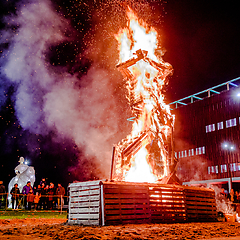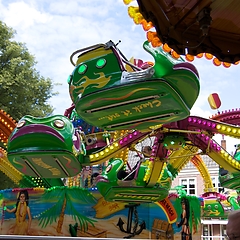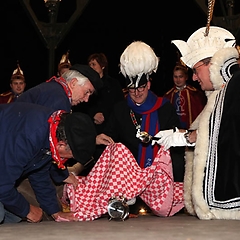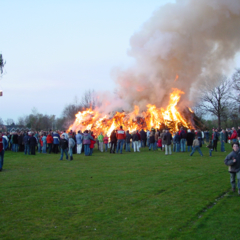In September, the new 'mayor' will be designated by the current mayor in the Netherlands (municipality of Steenwijkerland). That is a resident who has two tasks: keeping the Easter fire alive and designating a successor. The undemocratic 'election' is accompanied by a chain of office, own national anthem and flag. The mayor is also the one who maintains contact with the municipality. During the year, prunings are collected at the bridge that connects the two parts of the neighborhood and there is also Easter fire. The Easter fire is lit on Easter Day around sunset. Today's teenagers and twenties have taken over the duties of lighting and keeping the Easter fire burning from the previous generation. For all residents of the neighborhood this is the opportunity to come together and talk to each other. There are always residents who spontaneously bring something to drink. Recreational residents are also involved in the Easter fire and the gathering contributes to the mutual connection and expresses the local identity.
Buurtschap Nederland consists of nine former farms and all residents are active in the mayor tradition and the Easter fire involved. Today's teenagers and twentysomethings have taken over the duties of lighting and keeping the Easter fire burning from the previous generation. For all residents of the neighborhood this is the opportunity to come together and talk to each other. There are always residents who spontaneously bring something to drink. Recreational residents are also involved in the Easter fire and coming together contributes to the mutual connection and expresses the local identity. The municipality is involved because of issuing a permit for the Easter fire and the residents have to deal with the IJsselland security region.
The tradition has existed since 1985 and connects the Easter fire that is ignited annually with the mayor. The Easter fire tradition in the hamlet originated earlier in the 1980s, because the function of the nine farms then shifted from agricultural use to habitation. The residents must take into account the wind direction (the houses and adjacent nature reserve the Weerribben) and drought in the area. Rainy weather on that day could also prevent the Easter fire from being lit, or sometimes on another day. The municipality has not issued a permit for the Easter fire for two years. That is why in 2015 an alternative Easter fire was organized in one of the gardens with torches and fire pits. Being together - a very important element of tradition - has therefore been maintained. The mayoral election has changed little over the years. The mayor is still responsible for the Easter fire. The task of keeping the fire burning has now been taken over by a new generation.



